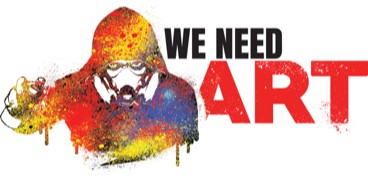- Add artworks to your wishlist
- Contact the artists by email
- Make an appointment to see the artworks at the showroom
OUR GALLERY OF STREET ART GRAFFITI ARTWORKS
Graffiti is an inscription made on a wall or any other medium that allows the author to express an idea, an emotion, to pass a message. More successful than the simple tag that represents the signature of its author (his name, his nickname), the graffiti fits totally in the techniques of urban art that we find today mainly in our streets, but also more and more on canvases.
Without necessarily going back to mythology, the graffiti originates from the North America of the 60s/70s. The goal of the North American graffiti and the graffiti artists who practiced it at the time, was initially to obtain the recognition of their peers by...
Graffiti is an inscription made on a wall or any other medium that allows the author to express an idea, an emotion, to pass a message. More successful than the simple tag that represents the signature of its author (his name, his nickname), the graffiti fits totally in the techniques of urban art that we find today mainly in our streets, but also more and more on canvases.
Without necessarily going back to mythology, the graffiti originates from the North America of the 60s/70s. The goal of the North American graffiti and the graffiti artists who practiced it at the time, was initially to obtain the recognition of their peers by meaning "I am here" or "It is my district, my territory". Beside their name, taggers often added their street number. And then these tags have evolved by a more and more complex and technical realization, and the quality of the realization then became the ways to be recognized, always by the other graffiti artists. Often, the normal passerby did not understand these inscriptions on the walls and often likened these creations to urban pollution.
Imported in France at the end of the 80s, graffiti strongly developed in Paris and its suburbs and spread in other major cities of France. Mythical places appear like the palisades of the Louvre, the wasteland of Stalingrad but especially many places where graffiti artists act as vandals at night, and on all the supports available, walls, roofs, trucks, trains, subways, wastelands and even in the catacombs. Over the past 30 years, graffiti has gone from the vandal forbidden by law to today's integration into the world of art, and contemporary art in particular. The artists of the time moved from the wall to the canvas (or continue to do both) and the new generations go for canvas directly without ticking the vandal box. Exhibitions in art gallery, solo shows or collective, live performances outdoors or indoors, auctions, we find graffiti at all stages.
Graffiti has become a world art because in almost every country, wherever we are, we are confronted with graffiti. Each country now has its talented artists graffiti and especially travelers, because many foreign artists (like the French for that matter) now consider the world as territory and playground.
Try the artwork for free for 14 days
You have the possibility to return to us the artwork that you purchased if, at reception, it does not suit you.
Learn more













